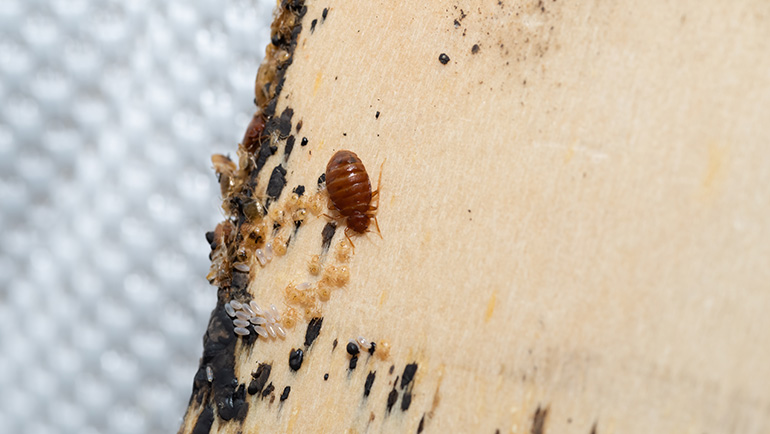Bed bugs are a persistent and often disruptive pest, especially in multi-family housing where units are closely connected. Their ability to spread quickly, hide in hard-to-reach areas, and survive for long periods without feeding makes them a serious concern for property managers and tenants alike. While eliminating an active infestation is challenging, proactive bed bug prevention can drastically reduce the risk of widespread problems in apartment buildings, townhomes, and similar properties.
Because these pests do not discriminate based on cleanliness or building age, even well-maintained properties can experience infestations. That’s why a structured, expert-guided prevention strategy is essential in multi-family settings. With the right practices in place, you can reduce tenant complaints, avoid costly treatments, and maintain the integrity of your property.

Understand the Unique Risks in Multi-Family Housing
Bed bugs are small, nocturnal insects that can easily migrate from one unit to another. Unlike single-family homes, multi-unit buildings create a dense network of living spaces with shared walls, hallways, and utility lines, which provide multiple pathways for bed bugs to spread unnoticed.
Several factors increase the risk of infestations in these settings:
- Frequent tenant turnover introduces new risk with every move-in
- Shared laundry rooms, lobbies, and trash areas increase cross-unit contact
- Delay in reporting due to social stigma allows bugs to spread further
- Secondhand furniture or deliveries can unknowingly introduce bugs
Once introduced, bed bugs can establish themselves quickly, often in more than one unit. This makes early detection and prevention strategies particularly important in multi-family buildings.
Build a Consistent Inspection and Monitoring Routine
Routine inspections are a cornerstone of effective bed bug prevention. Waiting for tenants to report bites or sightings often results in delayed response and larger infestations. A consistent inspection routine allows you to detect early activity and take corrective measures before the issue escalates.
Here’s what a proactive inspection strategy should include:
- Scheduled unit inspections during move-in and move-out processes
- Monitoring tools, such as bed bug interceptors under bed legs and furniture
- Common area inspections for signs of pest activity in lounges, laundry rooms, and storage closets
- Staff training to recognize early warning signs, such as shed skins or dark spotting on furniture
- Routine pest control check-ins by licensed professionals for ongoing prevention
Incorporating these steps into building maintenance protocols ensures that pest-related issues are not overlooked. Understanding when and why pests invade can also help staff and tenants recognize vulnerable areas before they become problems.
Educate Tenants and Promote Reporting
Tenant awareness plays a vital role in preventing bed bug outbreaks. Many infestations spread simply because they are not reported soon enough. Tenants may feel hesitant to notify property managers out of fear or embarrassment, especially if they mistakenly believe bed bugs are caused by poor hygiene.
An informed tenant community leads to quicker detection and more efficient response. Here are a few educational strategies to consider:
- Distribute materials that explain how bed bugs spread, the signs to look for, and how to report concerns
- Clarify responsibilities in the lease agreement regarding pest reporting and access for inspection
- Discourage secondhand furniture unless properly inspected
- Encourage early communication without fear of penalty or stigma
By fostering a cooperative environment and eliminating blame, property managers can ensure that cases are reported early and treated swiftly, minimizing impact across units.
Prioritize Follow-Up and Neighboring Unit Checks
Treating a unit for bed bugs is not a one-and-done solution. These pests are experts at hiding and can easily migrate to nearby units during or after treatment. That’s why consistent follow-up and inspection of neighboring units are crucial components of any prevention and control strategy.
Key follow-up practices include:
- Re-inspections scheduled within 10 to 14 days of initial treatment
- Treatment of adjacent units to prevent reintroduction
- Continuous monitoring for several weeks using traps or detection tools
- Clear communication with tenants on preparation and post-treatment expectations
Overlooking follow-up can lead to recurring infestations, especially in multi-family housing, where pests can move between walls. Learn more about the importance of following up to ensure complete eradication and prevent long-term issues.
Partner with Professionals for Long-Term Prevention
While it’s tempting to rely on in-house efforts or quick fixes, successful bed bug prevention in multi-family housing often requires expert support. Professionals not only provide access to more effective treatments, but they also bring specialized knowledge of how pests behave in multi-unit environments.
Professional involvement helps with:
- Identifying early signs of infestations, even when they are not yet visible
- Applying integrated pest management techniques that are safe and targeted
- Inspecting structural vulnerabilities that may be overlooked during routine maintenance
- Coordinating building-wide treatment plans when needed
In complex living environments, self-treatment can cause pests to scatter or delay proper diagnosis. Working with trained technicians ensures that prevention is handled with precision and long-term success in mind.
Take Prevention Seriously Before It Spreads
Proactive strategies save time, money, and tenant trust. Don’t wait for complaints to start piling up or for infestations to become overwhelming. If your building could benefit from expert insight, contact Bee Smart Pest Control for reliable help tailored to the needs of multi-family properties.

